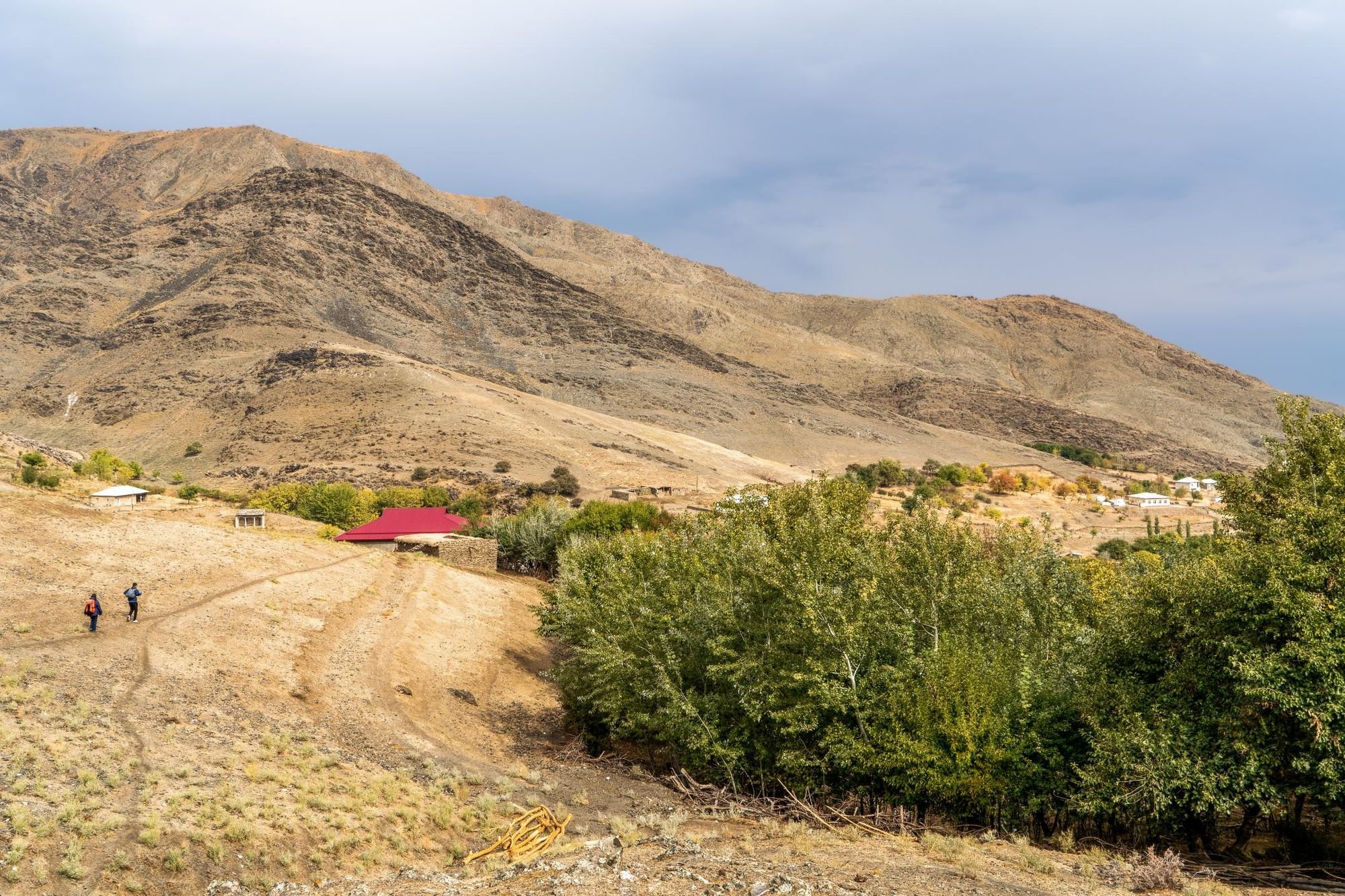The Nuratau Trails are a network of hiking trails in the remote Nuratau Mountains of Uzbekistan. They take you through a diverse range of landscapes—arid sandstone mountains, desert steppe and the wetlands surrounding Aydarkul Lake, a large artificial reservoir known as “the turquoise sea in the sands”, 205 miles (330km) west of the Uzbek capital of Tashkent.
Connect the trails in this network and you'll find yourself travelling between small villages, some sandwiched beneath canyon walls, other tucked away on hillsides. Family-run homestays allow you to immerse yourself in the culture. Here, life moves slowly. Locals milk their cows, tend to their gardens or work away on ikats—a hand-dyed, hand-woven textile with bright, bold patterns.
You'll pass through the rocky steppe and greenery of the Nuratau Nature Reserve, created in the 1970s to protect the endangered Severtzov’s wild sheep.
Perhaps the pick of the patchwork hiking routes is a 44.7 mile (72km) trail that can be linked together between the famous ecotourism centre of Sentob and the mountain town of Yotok. The route can be hiked over five days. On the way you'll pass through the rocky steppe and greenery of the Nuratau Nature Reserve, created in the 1970s to protect the endangered Severtzov’s wild sheep. You'll also pass ruined fortresses, ancient petroglyph sites and thriving local villages.

“In the Nuratau Mountains, there are different villages populated by people of Tajik and Uzbek ethnicity,” says Sherzod Norbekov, who developed the Nuratau Trails. “Tajiks settled here during the invasion of Alexander the Great into Central Asia in 329 BC, so a lot of these villages are very ancient.
“To get the real value out of a hiking trip here you need a guide. They’ll introduce you to local artisans, leaders and families while you’re hiking. You’ll try produce from organic farms and see handwoven handicrafts. These types of places aren’t listed anywhere.”
Establishing the Trails
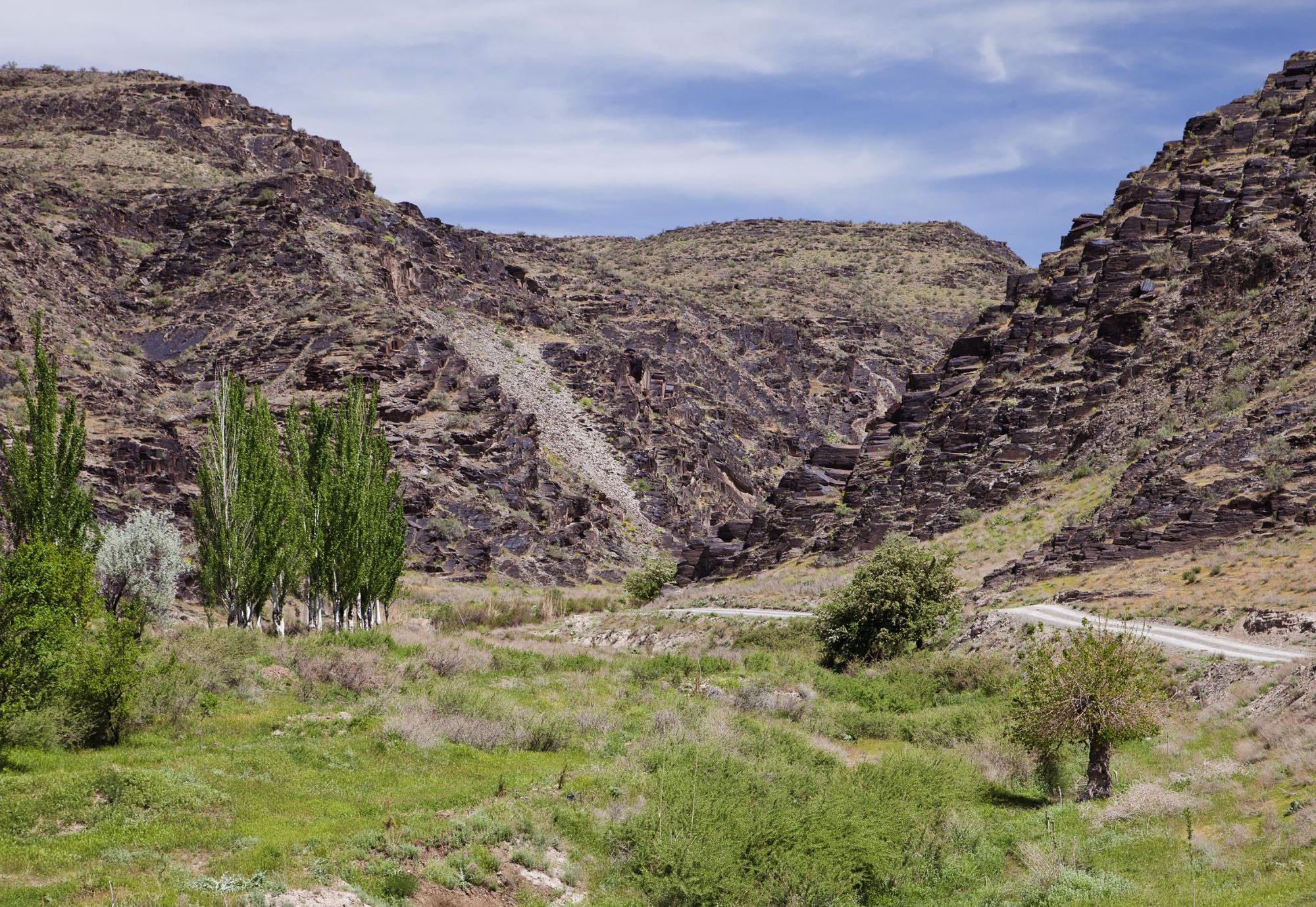
Sherzod was born and raised in the Nuratau Mountains, meaning he knows firsthand the difficulties villagers have endured in the past.
“After the collapse of the Soviet Union at the end of the 80s, the economy also collapsed. It was a very harsh and difficult time to secure employment,” he says. “Everybody started living as migratory labourers to Russia and to other countries, so the social conditions weren't nice in the villages.
“The people who remained turned to subsistence farming, keeping a lot of livestock, which eventually negatively affected the environment, degrading the soil and pastures. I was always thinking about what kind of alternative income should be created in order to help people move away from livestock farming, which if overdone, negatively affects the environment.”

In 2006, Sherzod volunteered as an assistant on a United Nations Development Program project, which uncovered the potential for community tourism in the region. Five years later, he set up his own tourism agency, and set about establishing a network of homestays and local guides in the villages of the Nuratau region.
“We provided training for local hosts and guides in English language, guiding, local flora and fauna, history, looking after guests, vegetarian meal cooking and many other things,” Sherzod says. “As well as setting up the homestay network, we mapped all the possible hikes in the area with elevation gain and loss. We can create a variety of different hiking routes, ranging from two days to two weeks.”
The Route: Sentob to Yotok

This multi-day hike begins in the small village of Sentob, which is located around 93.2 miles (150km) north of the Silk Road city of Samarkand.
Leaving Sentob, you'll hike through the Kadvan Valley, an area of undulating grassland, following a path alongside a clear mountain stream. Along the way you’ll see small waterfalls and natural pools, surrounded by lush vegetation. You’ll pass an old watermill, the ruins of an ancient fortress and some petroglyph sites, which are decorated with medieval Arabic scripts from the Quran.
“You’ll also see two or three villages which were abandoned in the 1950s. People were taken from them and forcibly resettled in other areas by the Soviet government to cultivate cotton,” Sherzod says.
On the second day, you’ll hike for 10 miles (16km) across the mountains to the next village, Majerum, passing through scenic foothills, orchards and pastures.
You arrive at the house of the local farmer called Mr Kolbash, who grows mulberries, apricots and walnuts. We have lunch in his garden
“In Majerum, you arrive at the house of the local farmer called Mr Kolbash, who grows mulberries, apricots and walnuts. We have lunch in his garden,” Sherzod says. “After lunch there’s a short hike through the Nuratau Nature Reserve to an ancient arbor vitae tree, similar to a fir tree, which is said to have been here during the invasion of Alexander the Great. It's a really huge tree with big branches. This tree is regarded by locals as a holy tree; it's a pilgrimage place.”
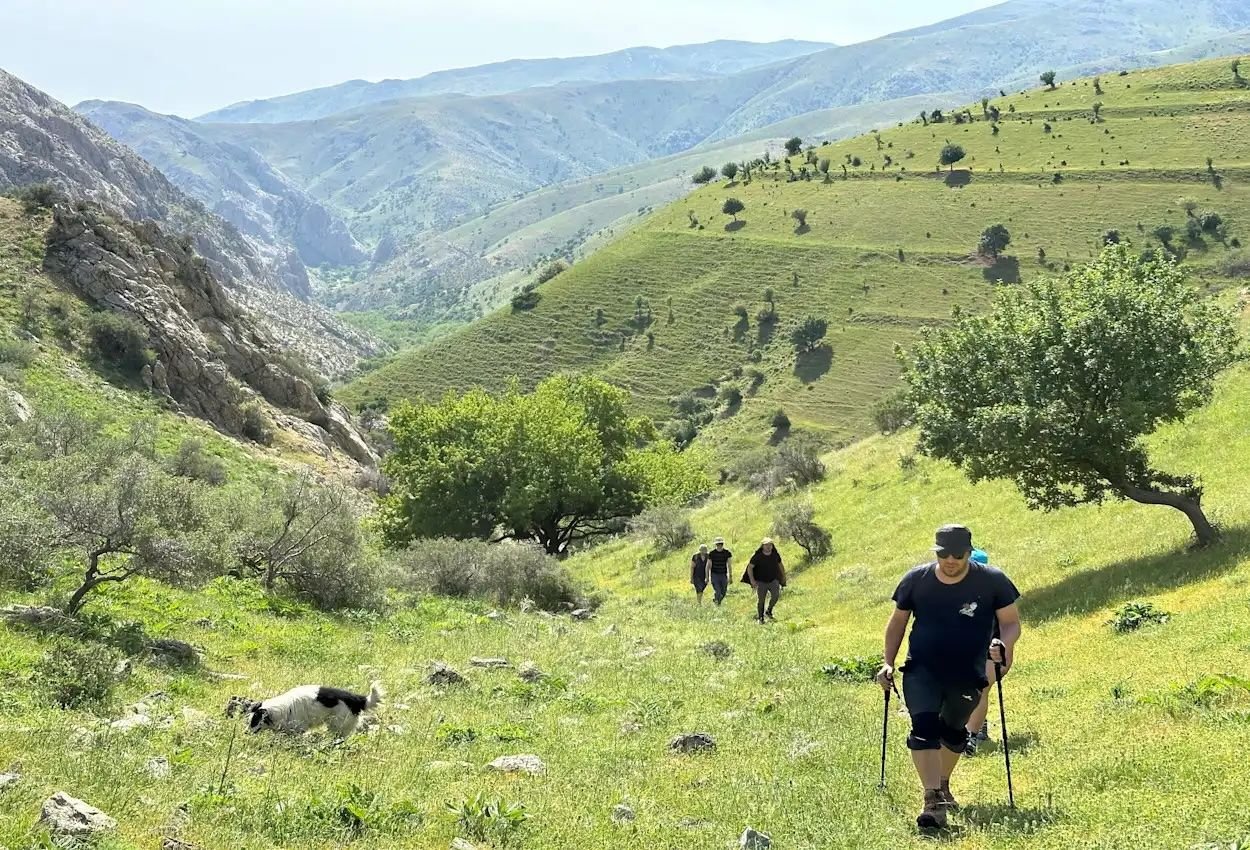
It's possible to stay overnight in a homestay hosted by a nature reserve warden's family. The house is located close to a breeding enclosure for Severtsov’s sheep, a rare species endemic to the Nuratau Mountains. When the numbers of sheep reach a certain number, they are released into the wild.
“Hikers can visit this breeding enclosure,” Sherzod says. “They can glimpse the daily life and activities of the family too, like how they milk the cows or make butter. Sometimes they bake bread when people arrive so they can watch.”
The next stage of the route takes you through Uhum Valley, which is a fantastic form of cultural immersion.
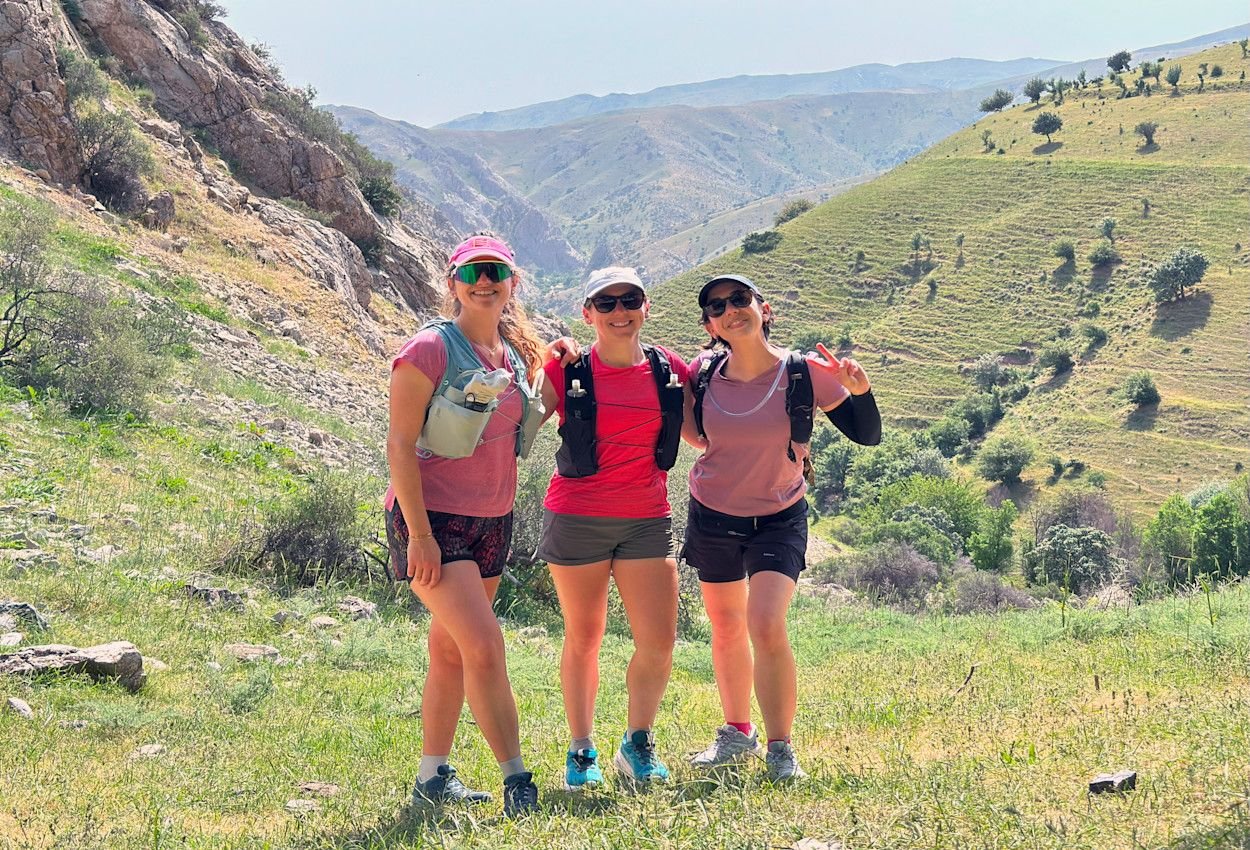
“As you walk up through the valley you can see people doing household activities; making bread in tandir ovens or weaving carpets,” Sherzod says. “You will also spot people carrying firewood. It’s very lively.”
At the upper reaches of the valley, you’ll see ancient irrigation channels still in use today, and you’ll also visit the ruins of an ancient fortress. Sherzod recommends staying in Sayyod Yurt Camp overnight.
The trail continues along the Nuratau foothills, through valleys and along rocky ridgelines, with sweeping views over the Kyzyl-Kum steppe, Lake Aydarkul and the surrounding villages. You’ll stop for a picnic lunch before returning to the lowlands. Your final destination is the village of Yotok, where you can celebrate the end of the walk with lunch at a local farmer’s house.
The Homestay Experience
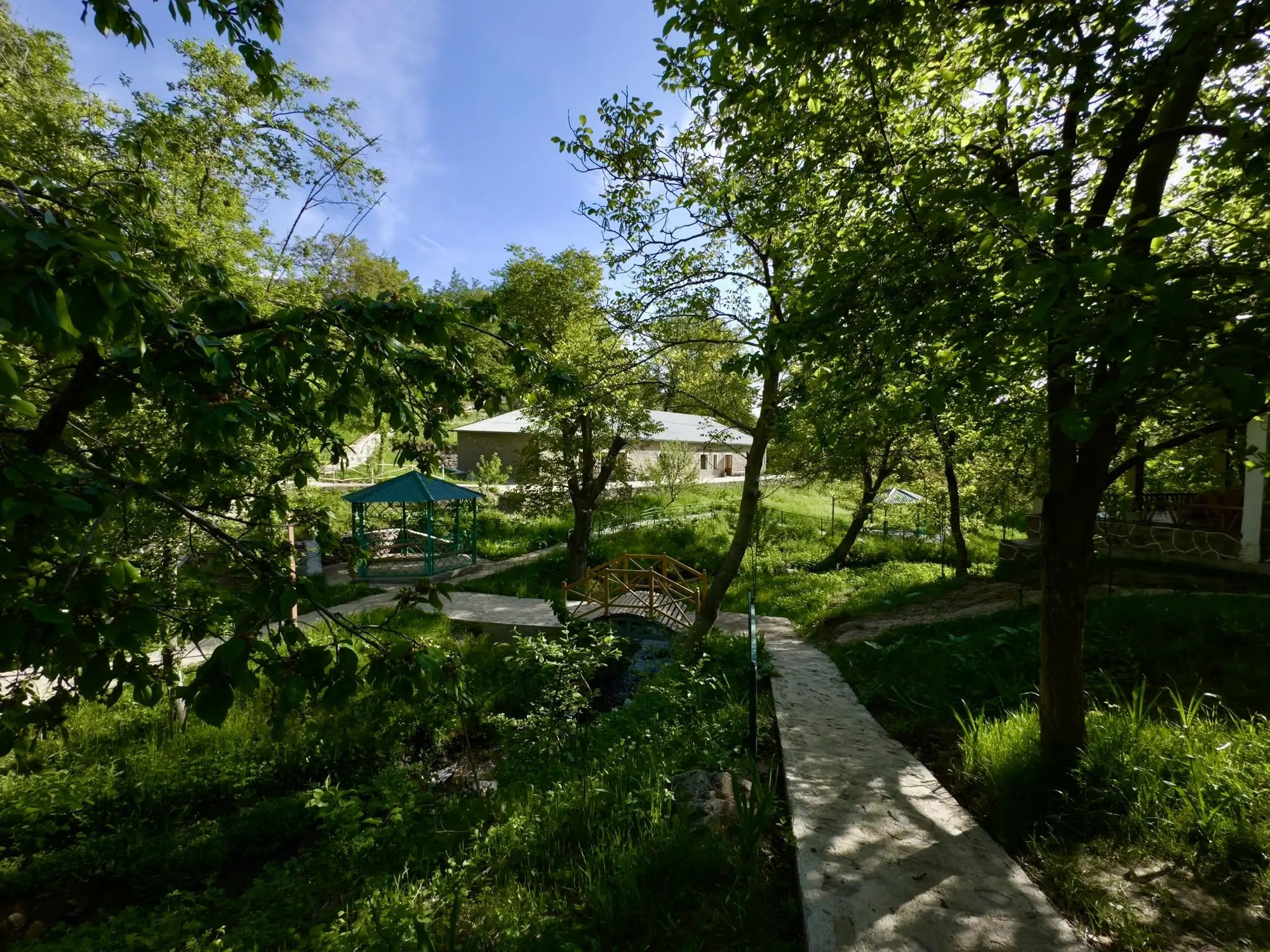
One of the most special things about hiking the Nuratau Trails is the accommodation. You’ll stay in locally-run homestays, which gives hikers a taste of the Nuratau Mountains’ culture.
“The guest rooms are furnished with traditional fabrics on the walls; some have beds, others have mattresses on the floor,” Sherzod says. “You’ll share a traditional meal with the family and you can also participate in the preparation of the meals. Some homestays have family members who play traditional music or dance.”
Staying in the homestays provides significant economic benefits for the host families.
After we set up the project, people were able to afford to send their kids to school
“When we were setting up homestays, the total income of the families we engaged with in Nuratau ranged between $700 and $1,500 per year,” says Sherzod. “By 2023 that ranged between $45,000 and $62,000 per year.

“After we set up the project, people were able to afford to send their kids to school. It improved things a lot because people started realising that they don't have to go to Russia or other countries to work as migrant labourers because there were opportunities in the village. So now they stay.”
Hiking the Nuratau Trails is not simply about covering distance; it’s a journey into the heart of Uzbekistan’s landscapes, history, and culture. Travellers can discover the beauty of these rugged hills and fertile valleys with the community, immersing themselves in the traditions of those who call these mountains home.
Inspired? Hike the Nuratau Mountains on our Hike and Explore the Silk Road in Uzbekistan adventure.


